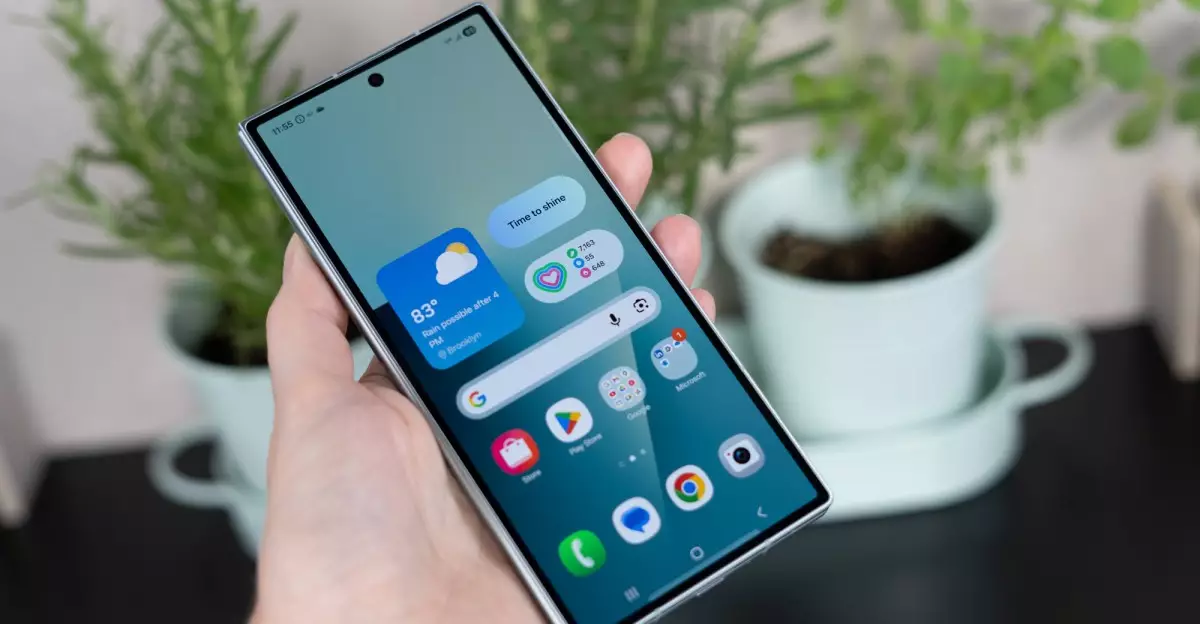The upcoming Samsung Galaxy Z Fold 7 marks a significant leap in foldable smartphone technology, setting a new standard for device thinness and user experience. At just 8.9mm when folded, this device is not only remarkably sleek but also symbolizes Samsung’s relentless pursuit of refining the foldable form factor. This slender profile transforms the device from a bulky gadget into a more natural extension of daily life, blurring the lines between a phone and a compact tablet.
While the technical improvements over the Z Fold 6 may appear incremental—mainly in performance and design—the emphasis on miniaturization reflects a bold vision for the future of mobile devices. The increased outer screen size to 6.5 inches enhances usability, making the device feel less like an innovative experiment and more like an everyday essential. Samsung’s focus on making foldables more manageable and comfortable aligns with a broader industry trend where portability and power coexist seamlessly.
Pricing Realities and the High Cost of Innovation
However, the technological marvel comes with a hefty price tag—$1,999.99 for the base model—raising questions about accessibility and the true value of such cutting-edge innovation. This is not a device aimed at the average consumer but rather at early adopters willing to invest heavily in the future of mobile technology. The premium price underscores a crucial challenge: for foldables to become mainstream, their costs must decrease significantly.
Despite this, Samsung and its partners are offering various incentives to ease the financial burden, especially during preorders. These promotions, including substantial trade-in credits and device-specific discounts, serve as a testament to Samsung’s confidence that early buyers will appreciate the transformative experience. But the clock is ticking—many of these deals expire just before or at launch, pushing consumers to act quickly, which can create a sense of urgency that might tempt impulsive purchases rather than well-considered investment.
Trade-In Strategies That Can Slash the Price
Trade-in deals are arguably the most attractive aspect of the Galaxy Z Fold 7 launch. The promise of reducing the final outlay from nearly $2,000 to around $1,000 or less is compelling—and it’s a game of strategic planning for savvy buyers. Carriers like AT&T, Verizon, and T-Mobile are dangling trade-in credits of up to $1,100, often paid over several months, making premium foldable technology more financially feasible for a broader audience.
However, these lucrative offers come with caveats. For example, the trade-in processes can be inconsistent: Samsung’s online platform offers immediate credits, but buying through carriers might require complex installment plans or acceptable device conditions, which can sometimes cause confusion or frustration for consumers. The clear takeaway is that those serious about obtaining a foldable device at a lowered cost should thoroughly compare offers across retailers and carriers, paying close attention to the fine print.
Moreover, the emphasis on trade-ins accentuates a fundamental truth: the true value of the Galaxy Z Fold 7 is heavily dependent on the secondary market. With the potential to trade in old Galaxy devices in any condition, Samsung seems to acknowledge that the device’s appeal hinges on flexible, consumer-friendly financing and trade-in incentives. Still, one must question whether such deals are sustainable long-term or merely temporary marketing tricks to boost initial sales.
Preorder Perks and the Race to Secure the Best Deal
Beyond trade-ins, Samsung has sweetened the pot with additional preorder bonuses. Customers who reserve early can receive a $50 Samsung credit for accessories, plus an extra $300 if they bypass trade-ins altogether—a tantalizing offer for early adopters eager to upgrade without the hassle of device valuation. These perks particularly appeal to consumers who are already invested in the Samsung ecosystem, encouraging brand loyalty and enhancing perceived value.
The exclusivity of these promotions—available only through Samsung’s official online store—may be a strategic move to drive direct sales, but it also limits options for consumers who prefer traditional retailers or carrier channels. Interestingly, some retailers like Best Buy and Amazon are offering their own bundle deals, such as no-cost upgrades to the 512GB variant and gift cards, which may appeal to budget-conscious buyers.
What’s clear is that the landscape is competitive, with incentives shifting rapidly as the launch date approaches. Consumers need to act swiftly if they want to maximize savings; otherwise, missed deadlines could mean shouldering the full hefty price without the benefit of discounts or freebies.
The Bigger Picture: Is the Foldable Revolution Sustainable?
Samsung’s relentless push into foldable technology signals a broader industry shift: foldables are no longer a niche luxury but are starting to approach mainstream appeal. Yet, whether this technological leap is sustainable remains to be seen. Despite the appealing form factor and practical improvements, the high price point and incremental upgrades highlight the challenges of mainstream adoption.
It’s difficult to ignore that the Z Fold 7, while visually stunning and technically advanced, still costs nearly double a typical flagship smartphone. This disparity raises questions about whether consumers are genuinely ready to embrace foldables as their primary devices or if these are fleeting innovations only suitable for early adopters and tech enthusiasts.
Nevertheless, Samsung’s aggressive marketing, coupled with strategic trade-in and preorder incentives, showcases a confident bet that consumers will see the foldable future as worth their attention—and money. If the price comes down over time, and if the technology continues to improve, foldables might finally fulfill their promise of being a seamless, versatile extension of our digital lives. Until then, the Galaxy Z Fold 7 stands as a bold, ambitious statement about where mobile technology is headed—albeit one that remains out of reach for many.

